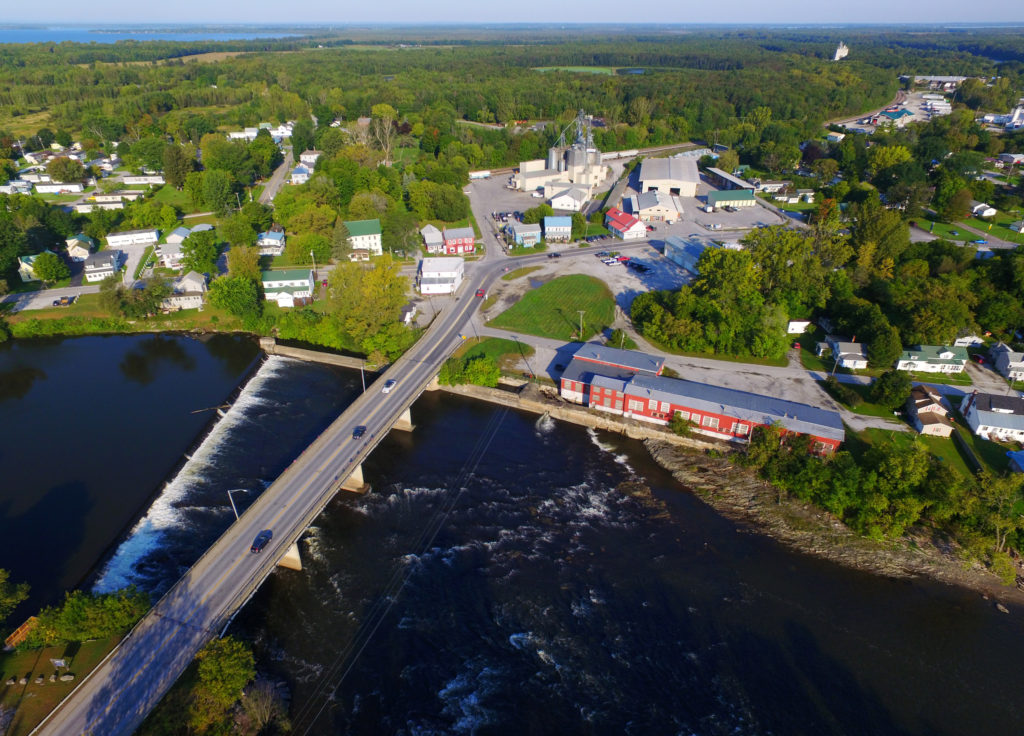ENVIRONMENTAL GROUPS OPPOSE SWANTON DAM
Environmental advocates Tuesday formally opposed the Village of Swanton’s bid to retrofit an old dam.
Members of four environmental groups have filed letters against Swanton’s recent preliminary filings with the federal agency that oversees the licensing of dams.
The dam currently powers nothing, and water advocates have long sought its removal. Swanton residents and officials argue that the dam creates a nice pond, that the spillway creates a pleasing sound, and that the structure itself might produce electricity.
“All we’re trying to do is what’s best for everybody,” said Reg Beliveau, Swanton Village administrator. “Global warming is affecting us. This could be a truly renewable energy source.”
Four environmental groups want the dam removed because it is damaging fish habitat.
Trout Unlimited, the Vermont Natural Resources Council, The Nature Conservancy and Lake Champlain International all filed formal objections Tuesday with the federal agency that oversees dam licensing.

“We understand that responsible hydropower that minimizes environmental impacts is part of a diverse renewable energy portfolio,” Jared Carpenter, of Trout Unlimited’s Vermont chapter, said in a release. “But it appears that opportunity has been long lost in this deteriorating dam. It provides no benefit and simply harms the environment and threatens public safety. Whenever possible, dams like this should be removed to reconnect our rivers and restore habitat.”
The village recently secured preliminary permits from the Federal Energy Regulatory Commission or FERC, Beliveau said. Village officials have also signed a contract in January with a developer, who is assessing whether the dam will generate enough electricity to justify the cost.
The 10-foot-tall dam could generate as much as 1.5 megawatts, Beliveau said. The developer would put in a fish ladder, he said, perhaps a fish hatchery and amenities for visitors.
The developer, Bill Scully, founder of Bennington-based Carbon Zero, has already successfully upgraded a dam in Bennington at the Vermont Tissue Paper Mill, Scully said. He is now conducting a feasibility study of the Swanton Dam.
The study might take more than two years to complete, Scully said, and construction could take another three years.
“If we’re going to work in the river, it would not be a fast process,” Scully said. “It’s a public resource, so we don’t get to do anything without a whole lot of people checking boxes and saying yes.”
About half dozen other developers have looked into converting the Swanton Dam, but couldn’t make the numbers work, according to Matt Rubin, who owns and operates hydroelectric dams in Vermont.
“People have been looking at that thing since 1985,” he said. “A half-a-dozen developers have looked at it, and nobody can skin the cat.”
Scully appears to have a chance at succeeding, however, Rubin said.
“He’s a skillful guy, and a competent hydro guy,” Rubin said. “If he can deal with the environmental impacts, I think the project has only benefits.”
Scully said it would likely cost at least $3.5 million to install a generator at the dam site.
This is the future in Vermont — a state that’s home to more than 1,200 dams, Scully said.
“You’re going to find more and more of these,” he said. Especially in a state whose residents have committed themselves to renewable energy, Scully said, “we need this as an energy source. It’s not an optional thing.”
It’s not clear whether, in light of concerns expressed by the Department of Fish and Wildlife, the state will approve the Swanton project.
“It’s way too soon to say whether the state will sign off,” said the Vermont Department of Environmental Conservation’s environmental enforcement division director, Kim Greenwood.
The developers have to show that the dam improvements won’t impair the stream, Greenwood said.
Although Rubin said that public opposition is rare for projects converting dams to generate electricity, others say Swanton Dam is already impairing the stream.
Some dams harm rivers less than others, said Shayne Jaquith, the Vermont Nature Conservancy’s watershed restoration manager.
“But generally, dams themselves have a significant impact on a river system,” Jaquith said.
The impacts include changes to the river’s water temperature and the amount of oxygen that’s dissolved in the water that could affect aquatic life, Jaquith said. Dams also affect the transport of river sediment, and the nutrients it contains, he said.
They also limit the movement of fish and the availability of water they need to survive.
A leak in the dam led to a large fish kill of the endangered stonecat several years ago.
As a result, the Vermont Department of Fish and Wildlife has also agitated for the dam’s removal.
“Whenever water levels get low like they have been, we get concerned there may be another fish kill,” said Eric Palmer, the Vermont Fish and Wildlife Department’s director of fisheries.





